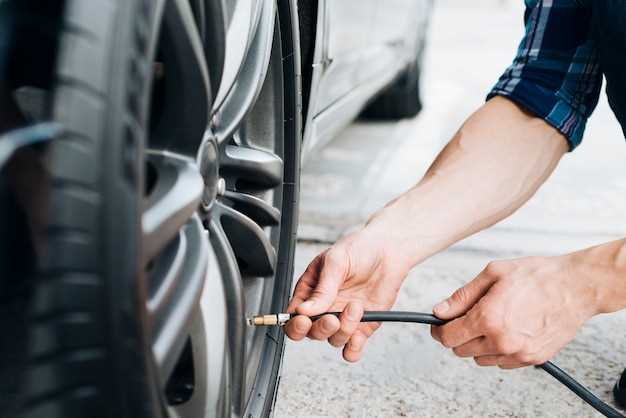
Tires are a crucial component of vehicle safety and performance, and ensuring their longevity is paramount for both safety and cost-efficiency. Uneven tire wear can significantly diminish a tire’s lifespan, leading to premature replacements and potentially hazardous driving conditions. By understanding the factors that contribute to this issue, vehicle owners can take proactive steps to maintain their tires more effectively.
One of the most significant methods to prevent uneven tire wear is through regular rotation of the tires. This practice involves changing the position of each tire on the vehicle at specified intervals, which helps to promote even wear across all tires. Tires wear differently based on their position due to weight distribution and driving dynamics, and rotation ensures that each tire experiences similar conditions throughout its lifespan.
Another critical factor in promoting even tire wear is proper alignment. When a vehicle’s wheels are misaligned, it can lead to excessive wear on specific areas of the tires, compromising their performance and lifespan. Regular alignment checks can help ensure that the wheels are pointing in the correct direction, providing a smoother ride and better fuel efficiency while simultaneously extending the life of the tires.
Importance of Regular Tire Alignment Checks
Proper tire alignment is essential for ensuring the longevity and performance of your vehicle’s tires. Misalignment can lead to uneven tire wear, which not only shortens the lifespan of the tires but can also negatively impact handling, fuel efficiency, and overall safety.
When your vehicle’s wheels are not aligned correctly, they do not point in the same direction. This can cause the tires to drag against the road, resulting in increased friction and wear. Regular alignment checks help to identify and correct any misalignments, ensuring that your tires maintain even contact with the road surface.
By investing in routine alignment inspections, you can prevent potential issues before they become costly problems. Misaligned tires can lead to a decrease in fuel efficiency, as the engine works harder to overcome the added resistance. Additionally, poor alignment affects ride quality, making your driving experience less comfortable.
Ensuring that your tires are properly aligned also enhances vehicle safety. Uneven tread wear can cause loss of traction, especially in wet or slippery conditions, increasing the risk of accidents. Regular checks allow you to maintain optimal tire performance, leading to better handling and stability on the road.
In summary, prioritizing regular tire alignment checks is crucial for preserving tire life, enhancing fuel efficiency, and ensuring safe driving conditions. A small investment in maintenance can save you significant costs in the long run, keeping your vehicle operating efficiently and safely.
Optimal Tire Rotation Patterns for Different Vehicles

Regular tire rotation is crucial for ensuring even wear and maximizing tire longevity. Different vehicles have varying rotation patterns based on their drivetrain configurations and tire types. Understanding these patterns helps maintain proper alignment and performance.
Front-Wheel Drive Vehicles: For front-wheel drive cars, a common rotation pattern is the “forward cross.” In this pattern, the front tires are moved directly to the rear, while the rear tires are crossed to the front. This strategy accounts for the greater wear on the front tires due to steering and braking forces, promoting balanced wear across all tires.
Rear-Wheel Drive Vehicles: On rear-wheel drive vehicles, the “rearward cross” pattern is more effective. In this setup, the rear tires are placed on the front in a crossed manner, while the front tires move straight to the rear. This pattern addresses the unique wear characteristics associated with rear traction and helps in maintaining optimal alignment.
All-Wheel Drive Vehicles: All-wheel drive systems often require a unique rotation pattern, typically following a “X” pattern. In this approach, the front tires are swapped diagonally with the rear tires, ensuring that all tires wear evenly regardless of their position. Regular rotation is essential for these vehicles to prevent uneven wear due to constant power distribution across all tires.
Performance Vehicles: For high-performance or sports cars, maintaining tire performance is critical. These vehicles often utilize a “side-to-side” rotation pattern, especially if they have staggered tire widths. This method helps balance wear on tires while also considering the specific grip and handling characteristics, ensuring optimal performance during driving.
In conclusion, adhering to the correct rotation patterns based on vehicle type is essential for prolonging tire life and maintaining performance. Regular rotation, alongside proper wheel alignment, can substantially reduce the risks of uneven tire wear and enhance overall driving safety.
Signs of Uneven Tire Wear and Maintenance Tips

Uneven tire wear is a common issue that can lead to reduced performance and safety hazards. Identifying the signs early can save you money and increase the lifespan of your tires. The first indication of uneven wear includes tire balding on one edge, which may signify misalignment. Additionally, if you notice a scalloped or cupped pattern on the tread, it often indicates that the alignment is off or that your tires may need balancing.
Another sign to watch for is excessive vibration while driving. This can be a result of abnormal tire wear, which not only affects comfort but can also signal alignment or suspension problems. If your tires consistently lose pressure, it may also suggest uneven wear patterns affecting stability and handling.
To maintain even tire wear, regular tire rotation is essential. This process promotes even distribution of wear and helps to extend tire life. Most manufacturers recommend rotating tires every 5,000 to 7,500 miles. Furthermore, maintaining proper tire pressure is crucial; both under-inflation and over-inflation can lead to uneven wear. Regularly check tire pressure and adjust according to the vehicle manufacturer’s specifications.
Additionally, schedule routine alignment checks, especially if your vehicle experiences any impact, such as hitting a pothole. Proper alignment ensures that all tires maintain equal contact with the road, preventing premature wear. Finally, invest in high-quality tires that are reputable and suitable for your driving conditions, as they are designed to resist uneven wear effectively.




